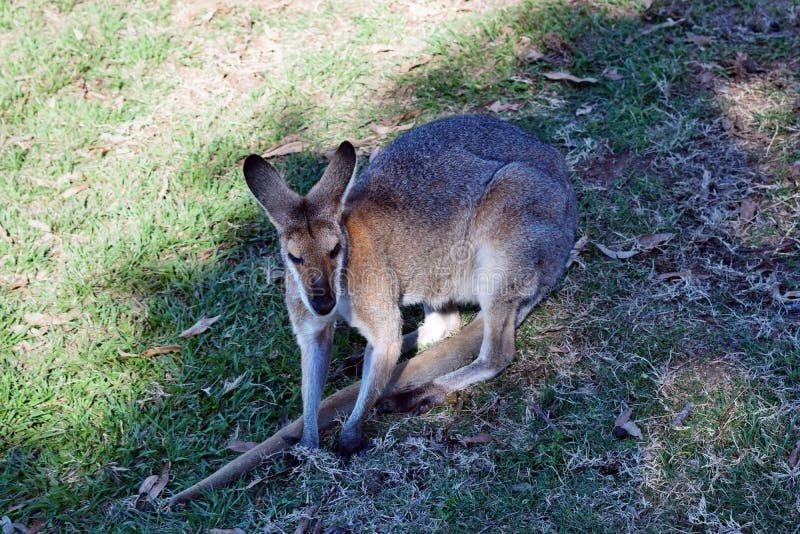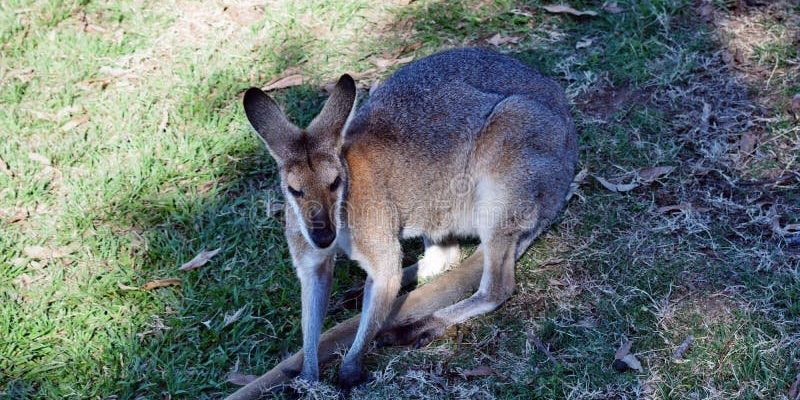
The red kangaroo isn’t just hopping around without a story. There’s a rich tapestry of adaptation and survival behind its majestic form. Think of it as a long-running series that started millions of years ago when ancestors of today’s kangaroos first began to roam the Earth. Understanding this evolutionary journey helps us appreciate not just the red kangaroo itself but also the entire ecosystem of Australia they inhabit.
Origins of Kangaroos
Kangaroos belong to a group called macropods, which means “big foot.” This name is quite fitting, as their powerful legs are designed for hopping long distances—a necessary trait for survival in the vast Australian terrain. The earliest ancestors of kangaroos appeared around 25 million years ago. They were quite different from the beloved red kangaroo we know today. Imagine them as small, tree-dwelling creatures, not the large leapers we see in the wild.
Over time, these early macropods adapted to the changing climate and environment of Australia. As forests transformed into more open grasslands, their size and abilities evolved too. Think of it like upgrading a vehicle: they went from a compact car designed for city driving to a rugged SUV built to cruise across the outback.
In fact, the red kangaroo (Macropus rufus) is a prime example of this adaptability. It developed a body designed to conserve energy while traversing long distances in search of food and water. This adaptability was crucial for survival as Australia faced various climatic shifts throughout its history.
Physical Adaptations
One of the most striking features of the red kangaroo is its powerful hind legs. These legs can propel it forward at impressive speeds—up to 35 miles per hour! It’s like watching a high-speed chase, but instead of cars, you have these remarkable creatures bounding across the landscape. This speed helps them escape predators and travel efficiently in search of food and water.
Along with powerful legs, red kangaroos also have a unique way of conserving water. Their bodies have adapted to extract moisture from the vegetation they consume, meaning they can endure long periods without drinking. It’s almost like having a built-in water filter! This is essential in the arid climate of Australia, where water sources can be scarce.
Their large ears also serve a purpose beyond just hearing. These ears help regulate their body temperature. When it’s hot outside, the kangaroo’s ears dissipate heat, much like how car radiators keep engines from overheating. It’s another clever adaptation that ensures their survival in extreme conditions.
Behavioral Traits
Behaviorally, red kangaroos are social animals. They often live in groups called mobs. These mobs provide safety in numbers, allowing them to look out for predators. Think about it! Just like in school or a work environment, being part of a group can provide a layer of protection and support.
Within these mobs, kangaroos communicate through various vocalizations, body language, and even grooming behaviors. Grooming is not just about looking good; it strengthens social bonds within the group. It’s fascinating to think that these creatures have their own social dynamics, much like us.
Mobs usually consist of one dominant male, several females, and their offspring. The males often engage in playful sparring to establish dominance, which is a bit like a friendly competition. This behavior helps maintain social hierarchy and prepares the young males for future roles as leaders in their own mobs.
Impact of Climate Change
Australia’s climate has changed tremendously over the millennia, and red kangaroos have had to adapt continuously. But here’s the thing—today’s climate change is happening at an unprecedented rate. The habitats that the red kangaroo relies on are changing, and that poses serious challenges.
As temperatures rise, food sources can become scarce. Imagine walking through your favorite park, but half of the trees have dried up, and your favorite picnic spot is now just dirt. For red kangaroos, this means they must travel greater distances to find food, which can lead to increased competition and stress.
Moreover, extreme weather events like droughts and floods can severely impact their habitats. During a drought, kangaroos may find themselves in conflict with livestock for limited resources. It’s a tough reality for these beautiful animals that have roamed Australia for ages.
Conservation Efforts
With the challenges posed by climate change, conservation efforts are more important than ever. Organizations and researchers are working tirelessly to understand kangaroo populations and their needs better. By studying their behavior and habitats, they can implement strategies to protect them.
One effective approach has been creating protected areas where red kangaroos can thrive. By preserving their natural habitats, we help ensure they have the resources they need to survive. Think of it like building a safe haven that allows them to live without the threat of human encroachment.
Additionally, raising awareness about these magnificent creatures and their ecological roles is crucial. The more people understand and appreciate the red kangaroo, the more they’ll want to help protect them. Education can lead to action, whether it’s through supporting local conservation efforts or making informed choices in everyday life.
The Role of Red Kangaroos in the Ecosystem
Red kangaroos play a pivotal role in maintaining the ecological balance in their habitat. As herbivores, they help manage plant growth by grazing. This grazing can encourage new plant growth, supporting a diverse ecosystem. Imagine it like they’re nature’s gardeners, pruning the landscape to promote healthy flora.
Their movements also help aerate the soil, making it easier for plants to grow. This process benefits other species, creating a ripple effect throughout the ecosystem. Without red kangaroos, the landscape of Australia would look quite different.
Furthermore, they are an essential food source for predators like dingoes and eagles. Their presence supports a healthy food chain, illustrating how interconnected all the species in an ecosystem truly are.
The evolutionary history of the red kangaroo is a fascinating journey through time, adaptation, and survival. From their ancient ancestors to their remarkable adaptations today, these creatures are a testament to nature’s incredible ability to evolve and thrive. As we face environmental challenges, understanding and protecting red kangaroos becomes even more crucial—not just for their survival, but for the health of Australia’s entire ecosystem.
So, next time you see a kangaroo hopping gracefully across the land, remember the rich story behind it. These animals are not just symbols of Australia; they represent resilience, adaptation, and the intricate dance of life in nature. Let’s cherish and protect them for future generations to admire and learn from.

